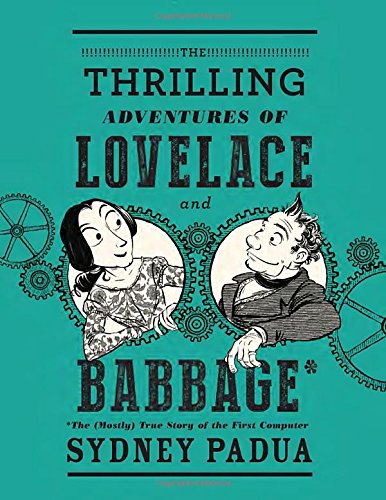The Thrilling Adventures of Lovelace and Babbage
20 November 2016
As a rule, I don't do book reviews. My main area of activity is software development, and I know too many authors. If I started reviewing books it would be an endless task. So I just don't do it.
But I can't help writing a few lines about The Thrilling Adventures of Lovelace and Babbage, drawn and written by Sydney Padua. The book is mostly graphic novel, but with a sizable dollop of fascinating history thrown in. It opens with a comic book narrative of the collaboration between Countess Lovelace and Charles Babbage, which explains why we refer to Countess Lovelace as the first computer programmer.
That done, and very entertainingly done, the book enters a pocket universe where Lovelace doesn't die young and is able to work further with Babbage and build the Analytical Engine. In this universe the book tosses off a string of stories, including a two page story of the difficulties of ordering tea when you're George Boole, and the fifty-four page adventure of George Eliot getting lost inside the Analytical Engine while it spell-checks her novel (George Eliot is played by Miss Marian Evans, or vice-versa.)
The book is imaginative, funny, and also very informative about the real Victorian universe. Appropriately 1 much of the fun of the book comes in the footnotes (many of which have endnotes), which describe what the comics are referring to in our inferior universe. All in all it's a great book for dipping in and out of, and I think most people who read my serious stuff will find it a most excellent diversion.
1: You'll have to read the first part of the book if you don't know why footnotes are so appropriate for a story about Lovelace.
(It's also a book that screams to only be a physical book. I mostly read ebooks now, but can't imagine the experience of this one being anywhere near as good in an electronic version.)
Footnotes
1: You'll have to read the first part of the book if you don't know why footnotes are so appropriate for a story about Lovelace.


